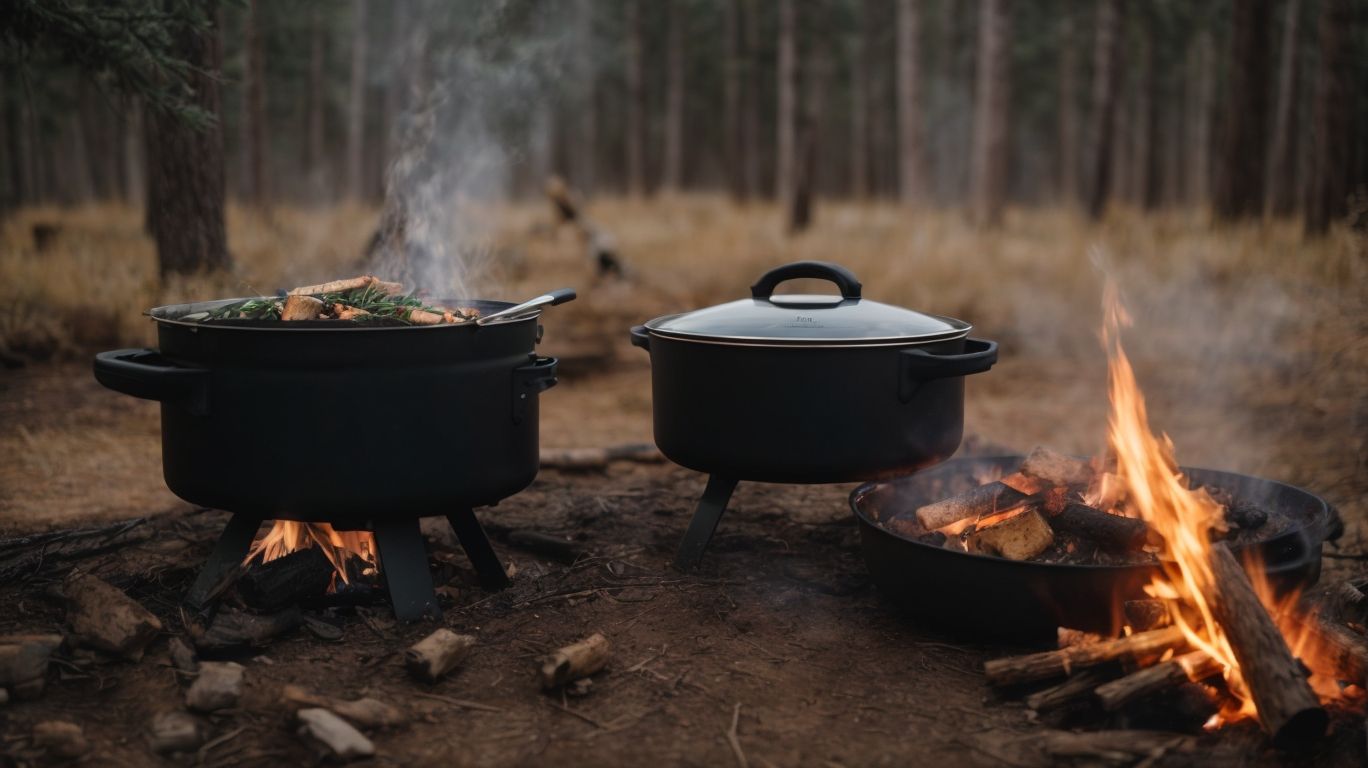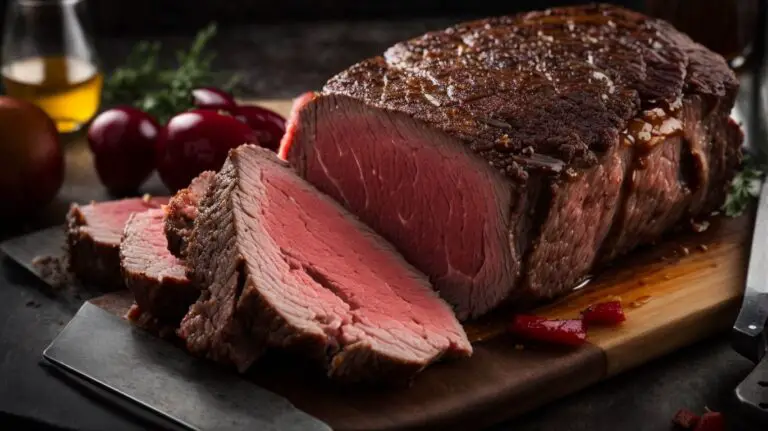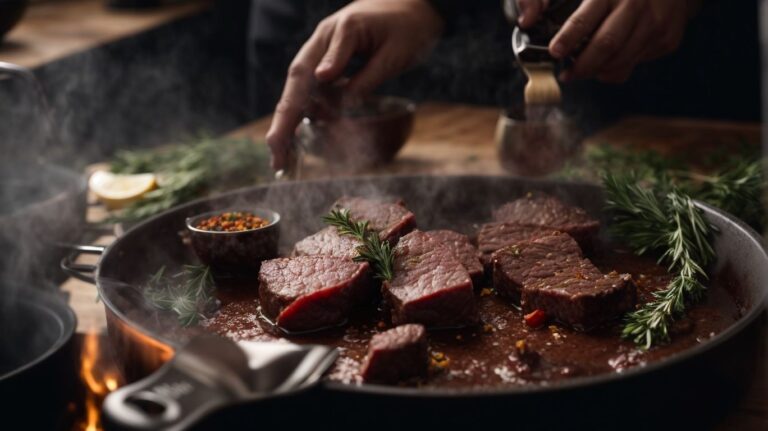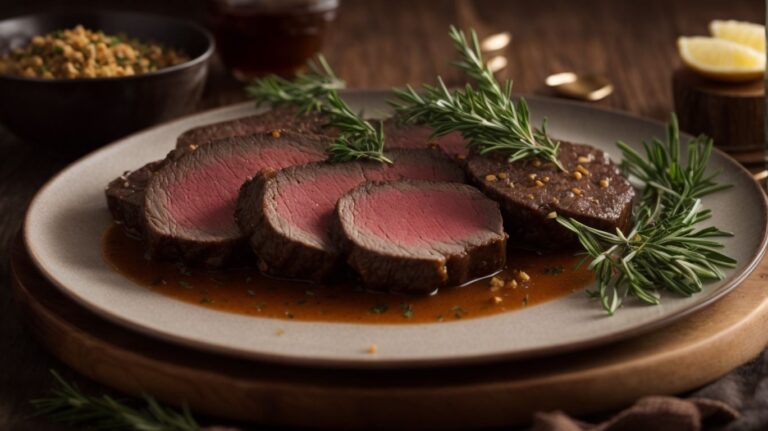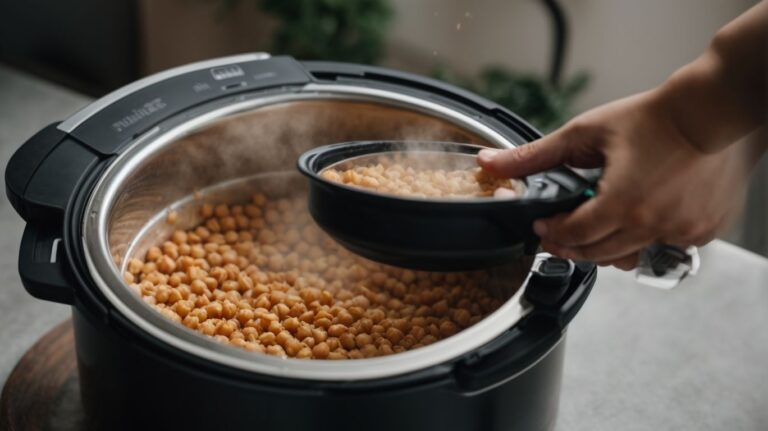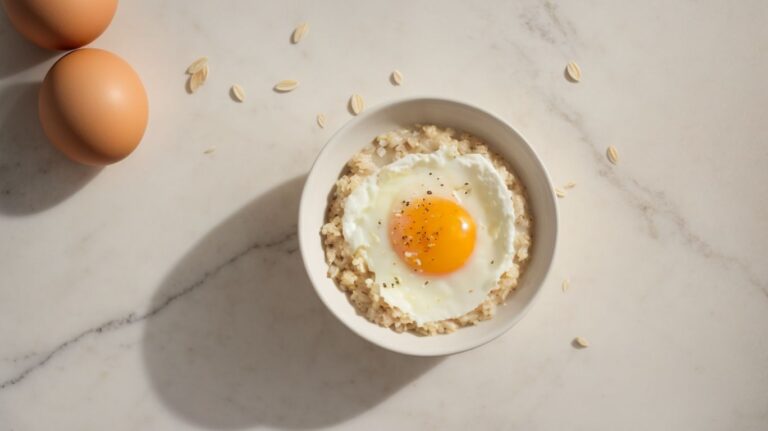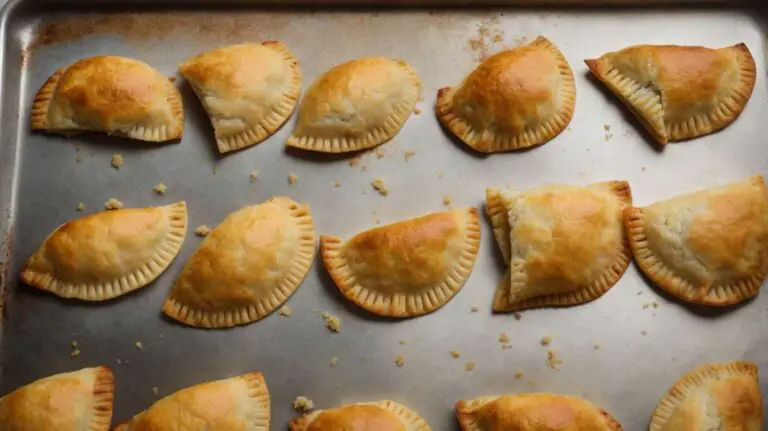How to Cook With a Dutch Oven?
Are you looking to improve your cooking skills and try out new recipes? If so, using a Dutch oven may be the perfect addition to your kitchen arsenal.
We will explore what a Dutch oven is, why it’s a great tool for cooking, how to choose the right one, and basic techniques for cooking with it.
Additionally, we will provide tips on how to season, clean, and maintain your Dutch oven, as well as some delicious recipes to try.
Let’s get cooking with a Dutch oven!
Key Takeaways:
What is a Dutch Oven?
A Dutch oven is a versatile piece of camp cookware that has been a staple in outdoor cooking for generations.
With its origins tracing back to the 17th century in the Netherlands, Dutch ovens are deeply rooted in culinary history. These sturdy cast iron pots were originally designed for cooking over open fires and have since evolved to be used in various settings, from campfires to stovetops. Their thick walls and tight-fitting lids make them ideal for slow-cooking, braising, searing, and baking, allowing for even heat distribution and retention.
Traditional uses of a Dutch oven include making stews, soups, chili, roasts, bread, and even desserts. The versatility of this cookware extends beyond the campfire, as it is equally popular for home cooking and professional kitchens. Its ability to withstand high temperatures and provide consistent heat makes it a favorite among chefs and cooking enthusiasts alike.
Why Use a Dutch Oven for Cooking?
Using a Dutch oven for cooking offers exceptional versatility, allowing for techniques such as braising, baking, and stewing with consistent heat distribution.
A key advantage of utilizing a Dutch oven is its capacity to enhance the flavors of dishes, thanks to its tight-fitting lid that traps the moisture and maintains a uniform cooking environment. This retention of moisture not only ensures succulent meats and perfectly cooked vegetables but also prolongs the simmering process, resulting in rich, deeply developed flavors.
The heavy construction of cast iron Dutch ovens allows for even heat distribution, preventing hot spots and enabling consistent cooking throughout the pot. This feature is particularly beneficial when slow cooking or simmering dishes for extended periods, as it helps achieve wonderfully tender and flavored results.
How to Choose the Right Dutch Oven?
Selecting the right Dutch oven involves considering factors such as sizes, lid types, handle design, and enamel coating for durability and performance.
What Material Should the Dutch Oven be Made of?
The ideal material for a Dutch oven is cast iron, renowned for its heat retention, even cooking, and durability in various cooking applications.
Cast iron’s superior heat distribution ensures that meals are cooked uniformly without hot spots, making it perfect for slow cooking, braising, or baking. Its natural seasoning properties develop a non-stick surface over time, enhancing flavor and preventing food from sticking.
Cast iron Dutch ovens can last for generations if well-maintained, offering excellent value for money. The robust construction and ability to withstand high heat levels make them versatile for stovetop, oven, or even open flame cooking. This makes them a beloved kitchen essential for both professional chefs and home cooks alike.
What Size Dutch Oven Should You Get?
Choosing the right size Dutch oven depends on factors such as the diameter of the pot and the number of servings you typically prepare.
Considering the diameter of the pot is crucial as it determines the cooking surface area available for ingredients to cook evenly. Smaller Dutch ovens are ideal for smaller households or single servings, while larger ones are more suitable for family dinners or batch cooking.
When estimating the serving requirements, it’s important to match the Dutch oven’s capacity with your usual batch sizes. If you frequently cook large meals or entertain guests, opting for a Dutch oven with a higher volume is advisable.
What Features Should You Look for in a Dutch Oven?
When choosing a Dutch oven, consider features like a lid stand, griddle surface, and the option of shallow or deep models to cater to your cooking preferences and versatility.
Some Dutch ovens come with innovative lid accessories such as a built-in thermometer for precise temperature control, or a self-basting lid design to ensure moist and flavorful dishes.
Certain models offer an interchangeable griddle surface that fits perfectly on top of the Dutch oven, expanding your cooking possibilities from stovetop searing to grilling and more.
It is also important to note that Dutch ovens vary in pot depth, with deeper options ideal for soups and stews, while shallower versions are great for baking bread or making casseroles.Choosing the right accessories and design features can greatly enhance your culinary experience with a Dutch oven.
Preparing Your Dutch Oven for Cooking
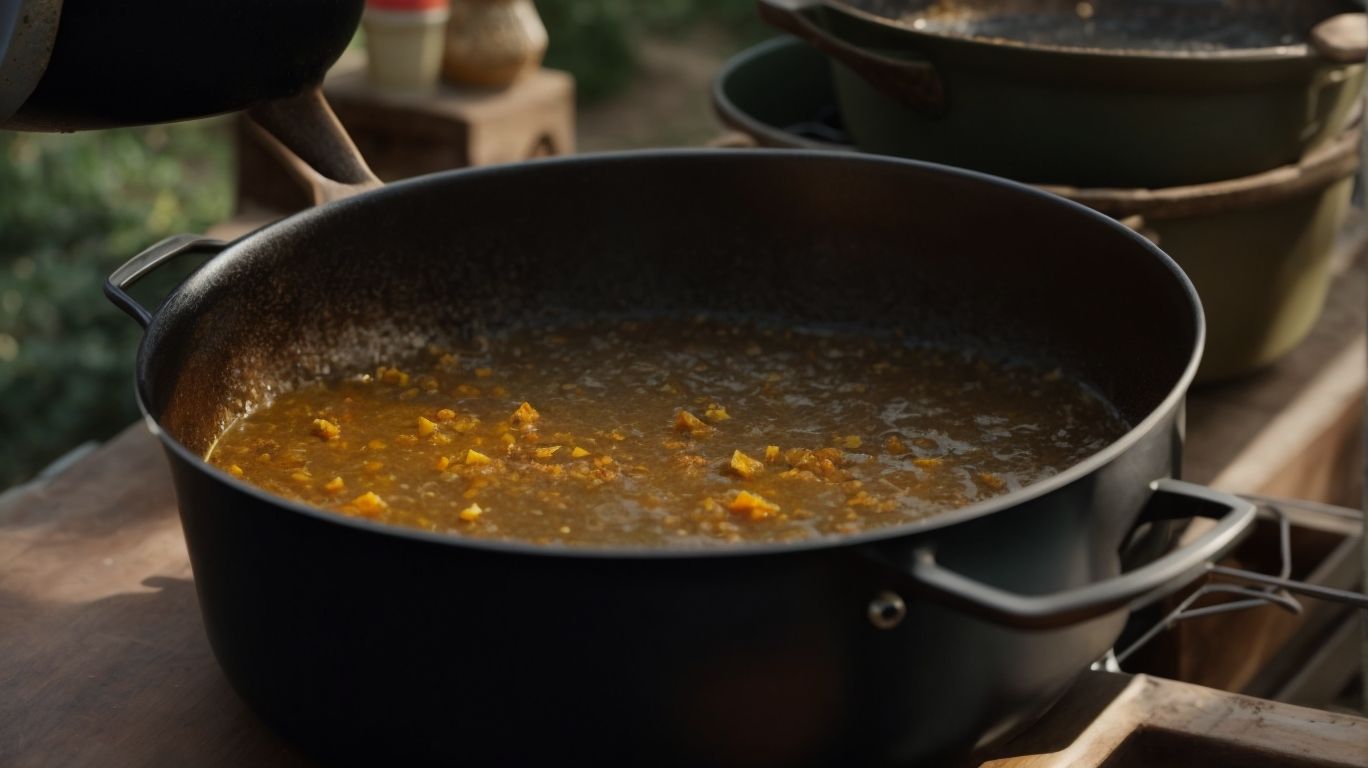
Credits: Poormet.Com – Ethan Lopez
Properly preparing your Dutch oven for cooking involves seasoning it, maintaining its cleanliness, and ensuring regular upkeep for optimal performance.
How to Season a New Dutch Oven?
Seasoning a new Dutch oven involves heating it with charcoal or wood embers to create a protective layer that enhances its non-stick properties and prevents rusting.
To start the seasoning process, make sure the Dutch oven is clean and dry. Apply a thin layer of vegetable oil or shortening to the entire surface; this helps in the seasoning process. Next, place the Dutch oven over a consistent heat source, ensuring even distribution by rotating it occasionally to avoid hot spots. The charcoal or wood embers provide the necessary heat, allowing the oil to polymerize and bond with the iron, creating a smooth surface. Repeat this process multiple times to build up a durable seasoning layer that will improve with each use.
How to Clean and Maintain Your Dutch Oven?
Cleaning and maintaining your Dutch oven involves using appropriate accessories, gentle cleaning methods, and regular maintenance to preserve its quality and cooking performance.
When cleaning your Dutch oven, remember to avoid harsh chemicals and abrasive scrubbers that could damage the seasoning of the pot. Instead, opt for a mild dish soap, warm water, and a soft sponge.
After each use, ensure that the pot is completely cooled down before cleaning. Always hand wash your Dutch oven rather than using a dishwasher, as the intense heat and chemicals can adversely affect its seasoning.
For stubborn food residue, create a paste using baking soda and water, apply it to the affected areas, and let it sit for a few hours before gently scrubbing it off.
Basic Techniques for Cooking with a Dutch Oven
Mastering basic techniques for cooking with a Dutch oven, such as braising, stewing, baking, and frying, unlocks a world of culinary possibilities in outdoor and home cooking.
Braising
Braising in a Dutch oven involves slow-cooking ingredients like chicken to tender perfection, infusing flavors and creating hearty dishes ideal for any occasion.
When braising chicken in a Dutch oven, the key is to sear the meat first to lock in juices and enhance the caramelization process. This initial step adds depth of flavor to the dish.
Consider using a combination of aromatic vegetables such as onions, carrots, and celery to build a flavorful base for your braising liquid. Experiment with different herbs and spices like thyme, rosemary, and garlic to elevate the taste profile of your chicken dish.
Stewing
Stewing in a Dutch oven involves simmering ingredients to create flavorful and comforting stews that are perfect for cold-weather meals and cozy gatherings.
A Dutch oven’s thick walls and tight-fitting lid help retain moisture, allowing flavors to develop and meld together beautifully. When stewing, the key is to sear meat first to lock in juices and enhance the depth of flavor. Try a classic beef stew with tender chunks of meat, carrots, and potatoes, or opt for a vegetarian option with lentils, root vegetables, and savory herbs.
For optimal results, simmer your stew on low heat, allowing the ingredients to tenderize slowly and infuse the broth with rich flavors. Whether you’re preparing a hearty dinner for the family, entertaining guests, or meal prepping for the week, Dutch oven stews provide a versatile and delicious meal option suitable for various occasions.
Baking
Baking with a Dutch oven allows for the creation of artisanal bread such as sourdough, with crispy crusts and soft interiors reminiscent of a bakery-quality loaf.
Using a Dutch oven for bread baking results in excellent heat retention, which is essential for achieving that perfect crust. The closed environment within the Dutch oven helps trap steam released from the dough during the baking process, mimicking the effect of professional steam-injected ovens. This steam creates a crisp crust while allowing the bread to rise fully before forming a thick crust.
To start, preheat the Dutch oven along with the oven itself to create an even baking environment.
Frying
Frying in a Dutch oven offers a versatile method for preparing dishes like seafood stew, combining crispiness and flavors in a single cooking vessel for a delightful culinary experience.
In terms of frying in a Dutch oven, one essential technique to master is maintaining the right oil temperature to achieve that perfect crunch without the dish becoming greasy.
Consistency in oil temperature is key to ensuring an even cooking process throughout. Using a Dutch oven allows for better heat distribution and retention, aiding in the creation of those rich, deep flavors that characterize the best-fried dishes.
Recipes to Try with Your Dutch Oven
Experimenting with recipes in your Dutch oven can lead to delightful culinary creations such as beef stew, chicken pot pie, no-knead bread, and one-pot pasta.
Beef Stew
Beef stew cooked in a Dutch oven yields tender meat, rich flavors, and hearty textures, making it a comforting and satisfying meal for any occasion.
When constructing a delectable Dutch oven beef stew, utilizing the right cut of meat is paramount. Opt for well-marbled braising cuts like short ribs, chuck, or brisket for deep, succulent flavors. To elevate the dish, complement the meat with a mirepoix of onions, carrots, and celery, enhancing the savory profile. Adding aromatic herbs like thyme and rosemary along with a splash of red wine can further intensify the flavor profile.
Chicken and Vegetable Pot Pie
The classic combination of chicken and vegetables in a pot pie cooked in a Dutch oven creates a comforting and wholesome dish perfect for family gatherings or cozy nights at home.
One of the key elements to making a flavorful chicken and vegetable pot pie is ensuring that the filling is well-seasoned with herbs like thyme and rosemary, along with garlic for added depth of flavor.
In terms of the pastry topping, a flaky and buttery puff pastry is a popular choice to complement the rich and hearty filling. Brushing the pastry with a mixture of egg wash before baking gives it that beautiful golden color and added shine.
A Dutch oven is the perfect vessel for baking a pot pie as it ensures even heat distribution, resulting in a perfectly cooked pie with a crisp and golden crust. Preheating the Dutch oven before placing the pie inside helps to achieve a nice crust on the bottom as well.
No-Knead Bread
Crafting crusty and flavorful no-knead bread in a Dutch oven requires minimal effort and yields bakery-quality results, perfect for bread enthusiasts and home bakers.
To begin, mix flour, salt, yeast, and water in a large bowl until just combined; cover with plastic wrap and let it sit at room temperature for 12-18 hours.
Next, shape the dough into a ball and let it rise for another 2 hours.
Preheat the Dutch oven in the oven at 450°F. Carefully transfer the dough into the hot Dutch oven, cover with the lid, and bake for 30 minutes.
Remove the lid and bake for an additional 15 minutes for a beautiful golden crust.
One-Pot Pasta
Preparing a flavorful one-pot pasta dish in a Dutch oven offers convenience and depth of flavors, with options to include ingredients like braised short ribs for added richness.
When creating a versatile one-pot pasta recipe, consider using seasonal ingredients such as sundried tomatoes, basil, and mushrooms to enhance the dish with vibrant flavors.
Opt for pasta varieties like fusilli or penne, as their shapes are perfect for absorbing the sauce while adding an appealing texture.
To achieve a well-balanced flavor profile, utilize a mix of fresh herbs like parsley and thyme, and don’t forget to season generously to enhance the taste.
Frequently Asked Questions
What is a Dutch oven and how do I cook with it?
A Dutch oven is a large, heavy pot with a lid that is commonly used for long, slow cooking. It is perfect for soups, stews, braises, and baking bread. To cook with a Dutch oven, simply follow the instructions for the specific recipe you are using.
Can I use a Dutch oven on any type of stovetop?
Yes, most Dutch ovens are designed to be used on any type of stovetop, including gas, electric, and induction. Just make sure to check the manufacturer’s instructions to confirm that it is safe for your stovetop.
Do I need to season my Dutch oven before using it?
Dutch ovens made of cast iron or enamel do not need to be seasoned. However, if you have an uncoated cast iron Dutch oven, it is recommended to season it before use to prevent rust and improve its non-stick properties.
What are some common dishes that can be made in a Dutch oven?
Dutch ovens are versatile and can be used to make a variety of dishes such as beef stew, chicken pot pie, chili, and even desserts like cobblers and bread pudding. The possibilities are endless!
Can I use my Dutch oven in the oven?
Yes, Dutch ovens are safe to use in the oven. In fact, many recipes call for transferring the Dutch oven from the stovetop to the oven for certain steps in the cooking process.
How do I clean and maintain my Dutch oven?
To clean your Dutch oven, let it cool completely before washing it with warm, soapy water. Avoid using abrasive cleaners or metal utensils that may damage the surface. To maintain your Dutch oven, make sure to dry it thoroughly after each use and store it in a dry place to prevent rust.

